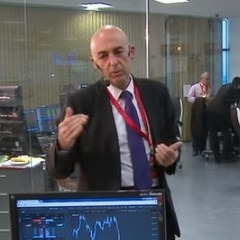
Бесплатный фрагмент - Influence of asymmetrical military confrontation on market structure.
From the Behavioral point of view by Semiotic approach
Abstract
INFLUENCE OF ASYMMETRICAL MILITARY CONFRONTATION ON MARKET STRUCTURE FROM THE BEHAVIORAL POINT OF VIEW BY SEMIOTIC APPROACH
In this work I look for an answer of the question how the conflicts in the different regions of the world influence on the market structure and its peculiar communication. At the same time is appraised the semiotic substance and power of the signs for the interpretation of a coercive changing economic reality. In the specific aspects of examination are included typical moments of military confrontation in Ukraine and in the territories, where Islamic State has activity. Some observations of the wars which took place in ex-Yugoslavia from the 90s of the XX century are also included.
AUTOR: GEORGI HRISTOV, MA, MSC
Main Text
The simplest attempt for classification of the military conflicts would divide them into two characteristic types: more likely political (i.e. to impose a specific model of polity, political regime, ideological domination or some form of dictatorship…), or rather economical (for seizing and redistributing of markets, of strategic logistic locations or areas rich in raw materials and resources…). Most often the questions circle around clarifications who against who, where, with what ways and what purposes it gives one (or several) military conflicts and in the matter of this circle begins the upgrading — for the motives, interests, the “aggressor” and the “aggrieved party” are defined,… inevitably some conclusions are made for the ratio justice/injustice etc… — this provides an incentive for conversations, which are too often emotional and make an endless subjective spiral. If however we set aside these wastefull possibilites we will see that the memorable phrase of John E. Stenbeck Jr., defines the things in a specific, determined way, that regardless of what we are told, we must know, that it is about money.
The shooting of Gavrilo Princip in Sarajevo is most often accepted as the beginning of the todays age, looked at as a historical category. Only about 20 years later, thinking about the social philosophy John Maynard Keynes writes: “…Moreover, dangerous human proclivities can be canalised into comparatively harmless channels by the existence of opportunities for money-making and private wealth, which, if they cannot be satisfied in this way, may find their outlet in cruelty, the reckless pursuit of personal power and authority, and other forms of self-aggrandisement…” [1] Unfortunately, in the real world, these two lines often fuse into one, also most often concealed behind some specious and relatively acceptable for the democratic community context. In his classical work “A Study of War” from 1942 the American political scientist and researcher of international relations Philip Quincy Wright brings out the convincing and statistically confirmed correlation when comparing the trends towards democratization during peace, and also the opposite trend towards democracy rejection during war times. [2] According to the autor this correlation confirms that rather the peace engenders democracy than the democracy to engender the peace. Certainly in the view for every contemporary military conflict a democracy is involved like the tendencies, especially after the end of the “Cold War”, are in a direction of a sharp rise of the uncertainty in every one of them. In parallel with that, we constantly observe an increase of the asymmetry in the modern military confrontations. The asymmetry in the international relationships can be defined as a lack of sameness between the entities as well as in their resources, status and strategies. In this relation NATO’s and USA’s leaderships in the last years promote more and more the necessity of apprehending new methods for warfare, because the traditional conventional war, at this moment is interpreted as something left completely in the past. Mr. Brian Colwell has described very accurately the separate elements:
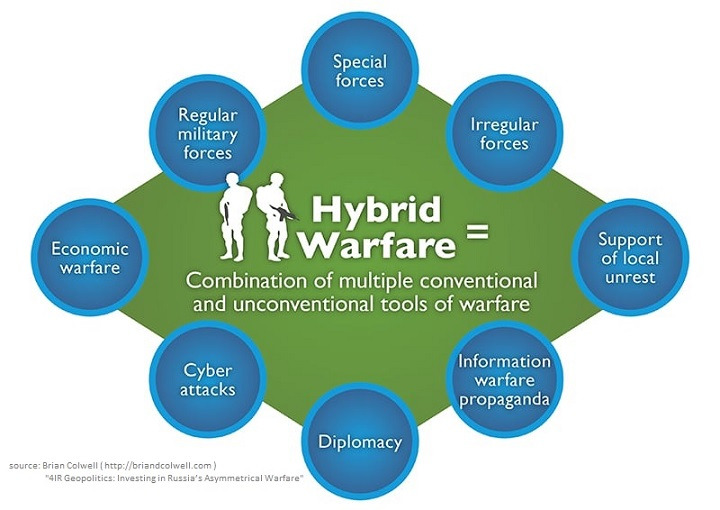
A great portion of the contemporary international relationships are becoming more asymmetrical and depend on the relationships between too many different individuals, like countries, transnational corporations, religious communites, secret financial conglomerats or not numerous, but effective and brutal teroristic units… From the paradox of the relations between them, appears the weak balance between “the power of the weak” and “the weakness of the strong”.
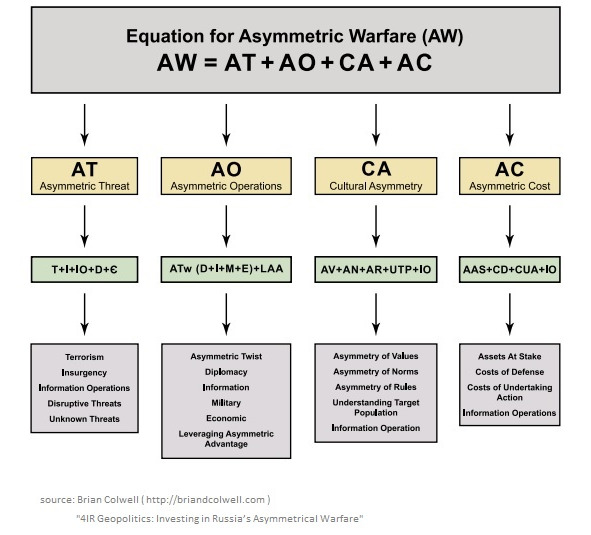
Nevertheless, the concentrated localization of the conflicts, the asymmetry in power, resources and propaganda, and also the emotionally ideological (most often in the media) color, cant cover the linear logic of the preconditions, which interpreted in whatever way still stay mostly as economic phenomena. The arms export remains an indicative element of this industry. But the market is a one whole. It is well shown in the opposite dependence on exports of the global powers, as a part of the intensity of military relations among the basic geopolitical units.
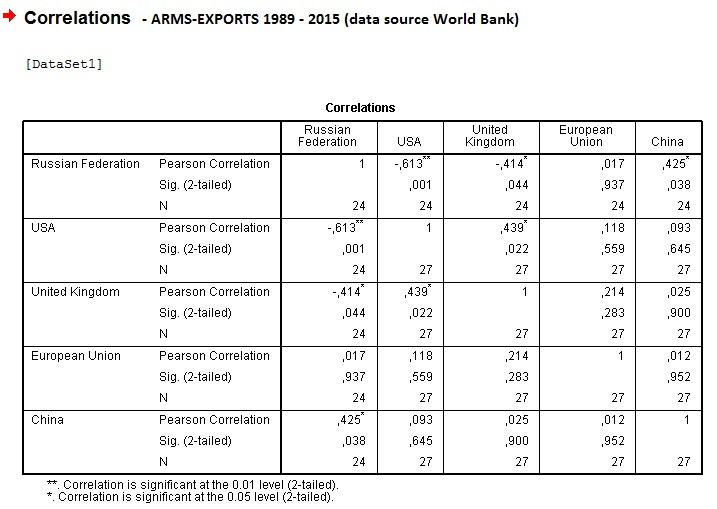
The political aspects turn up to be only complicated tools, something like euphemism in the global text of the power approach. Rostislav Ishchenko [3] says in an interview: “Whatever people say, in reality the crysis in Ukraine is a part of the overall global crysis, a part of the confrontation between USA and Russia. … This is a part of the reason for their games in Aphganistan, Georgia, Syria, and now in Ukraine. The things that happen in Ukraine are a confrontation between USA and Russia. Everything else is just small conflicts.” [4] The connection is gradually getting clearer and is not illogical at all for the educated part of the audience, regardles of the skills and preparedness of the main contractors. The purely financial interests regarding mainly the markets redistributions and preemtion of resources are visualized by implication, from a geopolitical to a local level.
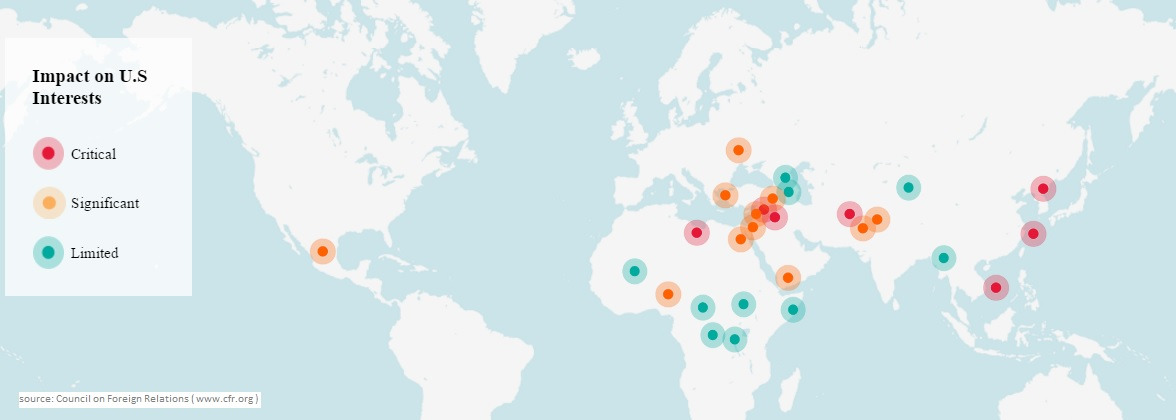
In our times the market is usually interpreted as a main norm of the generally recognized value systems in the developed societies. From here the attention is focusing on the process of exchange, as its essential element. We can immediately notice the base connection which is either rending or transforming beyond recognition in the military confrontation, regardless if we look at it as a global (geopolitical) plan or on a local level. “To get a good or money that do not belong to you has been possible even in then, with military actions — you kill, enslave and grab.” [5] This thought of the professor Neviana Krysteva, put as an antithesis of the market relations, is referring to a distant past time period, but is an applicable alternative at every time, exactly as a form of direct elimination of the exchange from the market structure. In this way in the zones of military confrontations the connections of the market relations are broken, the whole economic structure is destroyed and drastically changed; the influence on the market structure and the communication with the consumers is only an aspect of the overall collapse of the social system, build on the civilizations norms, equilibrium relations and generally accepted values.
Бесплатный фрагмент закончился.
Купите книгу, чтобы продолжить чтение.
